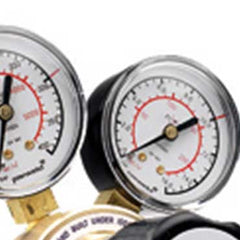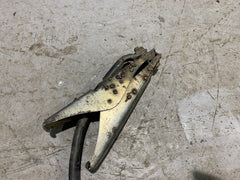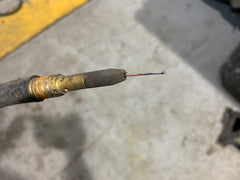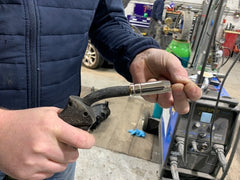Need Some Help? 0161 223 1843
Need Some Help? 0161 223 1843

November 26, 2019 6 min read



The contact tip has two main functions:
1. To ensure smooth feeding of the welding wire.
2. To ensure current is transferred from the wire and returned to the machine.
A loose contact tip does exactly the same thing as a poor earth clamp it creates instability of the welding arc which you will feel in your torch when welding.
The contact tip size is also important, the hole in the tip should allow smooth feeding of the wire yet also transfer the current smoothly. As a welding tip heats up during welding the copper expands and this, in turn, narrows the hole that the wire is feeding through causing the wire to be pinched and possibly slowing the wire feed down. This is natural hence contact tips are sized for the correct wire taking into consideration this expansion. A loose tip will heat up faster and also suck some of your welding current, again at low currents used in automotive welding this will create problems. A large or oversized hole creates its own problems, the welding wire can move about in the contact tip hole creating irregular current contact and movement of the wire possibly increasing spatter and weld position.
Thin welding wires (typically 0.6mm) have a severe problem with the helical coil, this is the natural curving of the wire as it is manufactured and then wound onto the wire drum. This spooling creates a snaking of the wire as it is drawn off the spool by the drive rollers and fed into the torch. The thinner the wire and the smaller the spool, the more of this snaking of the wire.
The effect of this is the wire moves around as it exits from the torch, a tight contact tip hole reduces this and enables you to feed your wire into the weld pool more smoothly and quickly.
A large hole enables the wire to move about creating more spatter and making it more difficult to get an instant weld pool. This is essential in automotive welding as it can create higher weld profiles that need grinding, poor weld appearance and enable blowing holes in the panel easier.
Your nozzle is important its the main part that controls gas flow. The gas nozzle and its size should be correct for what you want to weld. In automotive use, we would recommend no larger than the 150 sizes.
Also If you choose a nozzle that is too narrow for the application or if the diffuser becomes clogged with spatter, for example, there might be too little shielding gas getting to the weld pool. Likewise, a poorly designed diffuser might not channel the shielding gas properly, resulting in turbulent, unbalanced gas flow. Both scenarios can allow pockets of air into the shielding gas and lead to excessive spatter porosity and weld contamination.
Always clean your nozzle!

Comments will be approved before showing up.